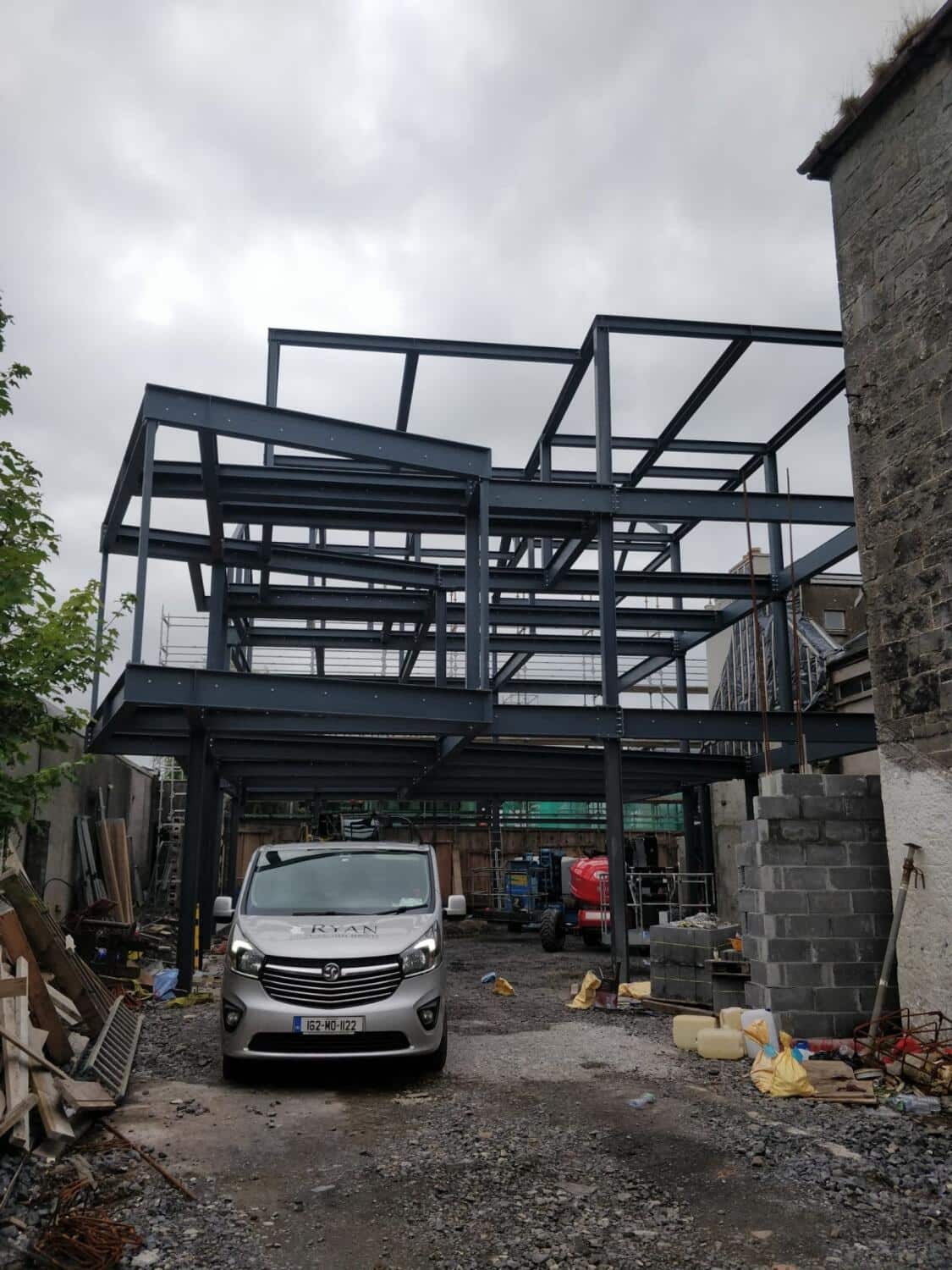

Ryan Structural Steel Services | Fadden, Co. Mayo
This project posed a unique structural challenge due to restricted site access, which prevented the use of large lifting equipment and conventional beam erection methods.
In response, Ryan Structural Steel undertook a proprietary engineering and fabrication programme to implement a proprietary bolted composite beam system using internally welded sleeves and threaded bars. The scope of the project included the fabrication, alignment, and on-site assembly of over 50 paired beam sets across multiple storeys, all of which were required to function as unified structural elements capable of transferring axial and shear loads.
The main objective was to ensure these bolted connections could replicate the performance of fully welded systems—without inducing deformation, misalignment, or failure under load.
Industry-standard practice would typically involve crane-based installation of prefabricated elements or in-situ welding, both of which were deemed impractical given the site’s access constraints and structural complexity. Instead, Ryan Structural Steel developed a tightly controlled workshop procedure involving sub-millimetre drilling tolerances, jig-based beam alignment, sleeve welding protocols, and a precise cross-pattern torque application strategy to achieve the necessary connection integrity.
These innovations were verified through physical mock-ups, fabrication trials, and on-site validation using temporary alignment frames. Ryan Structural Steel’s approach enabled modular, crane-free assembly while preserving structural continuity. The bolted system offered a flexible, high-precision alternative to welding, especially in constrained urban or heritage-sensitive sites.
The results demonstrated the effectiveness of the bolted composite system in real-world application. Post-installation inspections confirmed that the beams behaved as unified elements with no observable misalignment, deformation, or slippage.
The process not only met performance standards but also introduced a replicable methodology for achieving composite action in environments where conventional solutions fall short. Ryan Structural Steel’s work represents a significant advancement in adaptable steel connection systems, marrying workshop precision with on-site practicality.
This project deserves to win because Ryan Steel (Des Ryan) came up with the solution for the modular, crane-free assembly while preserving structural continuity. Ryan Steel engaged with external structural consultants and fabricators to test the availability and viability of any bolted alternatives. Across all consultations, it became evident that there were no pre-existing or standardised connection systems that could replicate the structural integrity of a single beam using two bolted members joined via internal sleeves and threaded bar assemblies.
Although various bolted connections exist for steel framing, none were documented or validated to enable precise axial alignment across multiple connections in paired beams while maintaining load-sharing behaviour across shear and moment zones.
The absence of documented case studies, design guides, or product standards for such an approach further substantiated the novelty of the solution being pursued. This thorough knowledge review process confirmed that no solution meeting the project’s unique requirements was available, nor was such a solution deducible using existing principles by a competent professional at the time.
The technological uncertainty therefore centred on whether a bolted double-beam configuration—assembled through a system of internally welded sleeves and torque-controlled threaded bars—could be developed to achieve full composite action under load. The proposed solution required not only innovation in connection design and fabrication but also the creation of new procedures for tolerance control, torque sequencing, and spatial coordination, none of which had prior precedent in the industry.




























